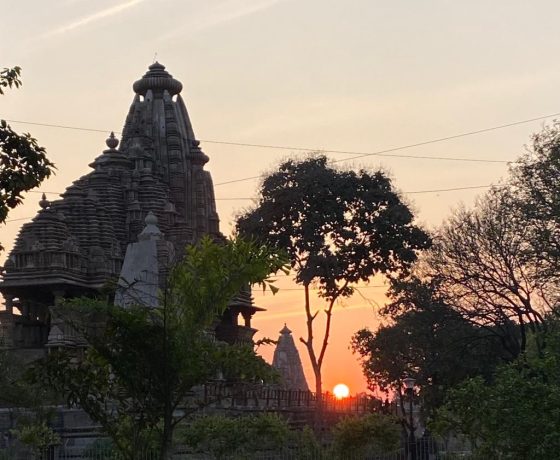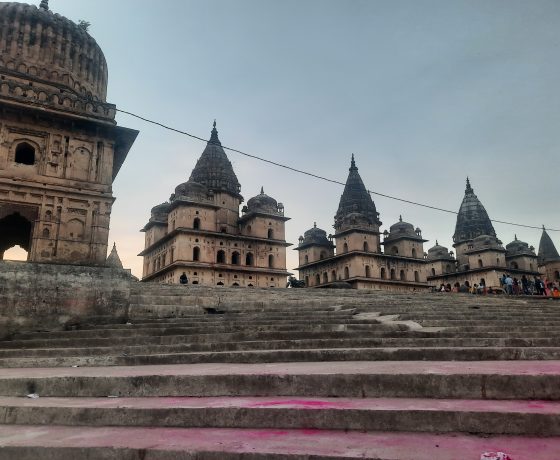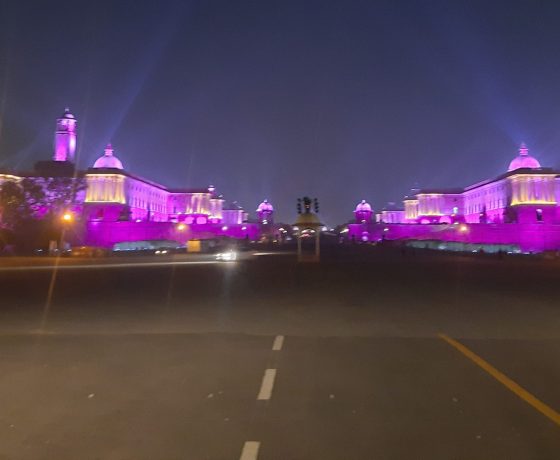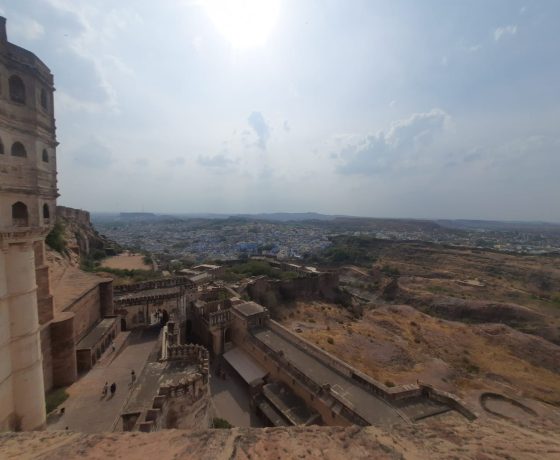Spiritual Tour
Spiritual Tour
Spiritual India, rich in holy places, traditions and rituals, offers much for those seeking knowledge and awareness. Visit these popular sacred destinations of various faiths to maximize your spiritual experience in India. We will be travelling from the Delhi; the capital of India, then to Mathura; Birth place of Krishna, Agra; the majestic & magnificent Taj Mahal, Lucknow ; the city of Nawabs, Ayodhya ; the birth place of Rama, Allahabad ; the place where Kumbh Mela – a mass Hindu pilgrimage of faith in which Hindus gather to bathe in a sacred or holy river and finally we end our journey in Varanasi ; the ancient city which will enlighten your religious spirits.
Tour Program
Arrive in Delhi today and get transferred in a private vehicle to your hotel where accommodation is held from 1400 hrs. Check-in and spend the rest of the day to explore the bustling national capital. Overnight in the hotel.
Delhi offers a harmonious blend of architecture and history. From remnants of the Mughal empire and British Raj to contemporary India, you can experience it all in the capital. The city is sure to charm you with its eclectic mix of the old and new – from magnificent monuments to bustling Old Delhi markets and stunning high rises.
Full day excursion to Old and New Delhi, exploring the medieval and pre-modern faces of the historic capital of India personified by the Jama Masjid and Chandni Chowk (closed on Sundays). Take a food walk in the Chandni Chowk market. In Afternoon visit Humayun’s Tomb and Qutub Minar. Overnight in the hotel.
Jama Masjid is a mosque in Old Delhi, constructed in 1650–56 by the Mughal emperor Shah Jahān, a noted patron of Islamic architecture whose most famous work is the Taj Mahal, in Agra.
This vibrant market came to existence when the fifth Mughal Emperor, Shah Jahan, shifted his capital from Agra to Shahjahanabad, now Old Delhi, in the mid 17th century. While Chandni Chowk or the moonlit square no longer bears the magnificence of the bygone era, its importance in the annals of Delhi will never be lost.
The food walk in Old Delhi is a great experience to and the best way to see and taste Old Delhi. The dishes one can savor in Old Delhi Food Walk are large, thick and juicy jalebis, glistening with ghee; Aloo chaat crisp fried potato cutlets dunked in a melange of chutneys and smattered with onions and spices ; varieties of stuffed paranthas potato, onion, cottage cheese, cauliflower, radish, dry fruits and many more….
Humanyun’s Tomb was built in 1565 A.D. nine years after the death of Humayun, by his senior widow Bega Begam. Inside the walled enclosure the most notable features are the garden squares (chaharbagh) with pathways water channels, centrally located well proportional mausoleum topped by double dome.
Qutab Minar is a soaring, 73 m-high tower of victory, built in 1193 by Qutab-ud-din Aibak immediately after the defeat of Delhi’s last Hindu kingdom. The tower has five distinct storeys, each marked by a projecting balcony..
After breakfast drive to Mathura, a drive of about 3 hours. Arrive and check – in at the hotel. Afternoon proceed to visit the temples in Mathura and Vrindavan. Overnight at the hotel.
Mathura & Vrindavan are ancient cities with golden past and are amongst the most visited religious destinations in the country. Dotted with myriad big and small temples in every nook and corner, these twin cities are major crowd-pullers and attract number of history buffs, holidaymakers and pilgrims. From exploring ancient temples and offering prayers there and admiring some old architecture.
A visit to the Dwarkadhish Temple of Mathura is unforgettable on many counts. The temple worships the idols of Dwarkadhish (Krishna), the king of Dwarka, along with Radha. The Dwarkadheesh Temple in Mathura is considered to be one of most visited temples in the city. The architecture of the temple is very interesting with beautiful carvings and paintings.
After breakfast drive to Agra, en – route stop for visiting Sikandra. A drive of about 2 hours, arrive and check – in at the hotel. In the afternoon proceed to visit the Agra Fort and Moonlight Garden. Overnight at the hotel.
Sikandra is a grandiose complex famous for being the home of the tomb of Akbar the Great, the greatest Mughal leader. This glorious monument showcases a harmonious fusion of Buddhist, Christian, Hindu, Islamic and Jain art and architecture. Marvel at a collection of lavish red sandstone and marble gateways, chambers and minarets. Enjoy a moment of peace and serenity while wandering along the pathways of a tree-shaded garden. Emperor Akbar started work on Sikandra and his own mausoleum in the early 1600s and it was completed by his son, Jehangir. Akbar’s dream was to create a blend of religious themes befitting of his well-known tolerance of spiritual beliefs. The complex takes its name from Sikandra Lodi, the former Sultan of Delhi who established the district in which it stands.
Known to exist since prehistoric times, Agra came into full flower during the 16th and 17th centuries as one of the four capitals of Mughal dynasty. It was in Agra that the artistic excellence of the Mughals reached its zenith at a time that coincided with the political high water mark of their vast and expanding empire.
Agra Fort was begun by Akbar between 1565 and 1573. It is situated on the west bank of the Yamuna River, about 2km upstream from the Taj Mahal. Akbar built the fort of sandstone; his grandson Shah Jahan, the builder of the Taj Mahal, constructed palaces of white marble within the fort itself.
The Mehtab Bagh or the moonlight garden, was the last of the eleven Mughal-built gardens along the Yamuna river opposite to the Taj Mahal and the Agra Fort. Built during the period 1631- 1635 A.D., Mehtab Bagh literally means “a moonlit pleasure garden”.
After breakfast proceed to visit the Taj Mahal (closed on Fridays). After visits leave for Lucknow, a journey of about 5hrs. Arrive and check-in at the hotel. Overnight stay in the hotel.
The Taj Mahal is an enormous mausoleum complex commissioned in 1632 by the Mughal emperor Shah Jahan to house the remains of his beloved wife. Constructed over a 20-year period on the southern bank of the Yamuna River in Agra, the famed complex is one of the most outstanding examples of Mughal architecture, which combined Indian, Persian and Islamic influences.
Lucknow is sprinkled with exceptional British Raj–era buildings, boasting two superb mausoleums and famed throughout India for its food, the capital of Uttar Pradesh is something of a sleeper: plenty worth seeing, but often overlooked by travellers. Central Lucknow features wide boulevards, outsized monuments and several parks and gardens, but feels a bit worn out, creating an atmosphere of tired grandiosity. Locals tend to be welcoming, and you’ll experience little of the hassle of more touristy towns.
After breakfast proceed for sightseeing of Lucknow. We start the tour from La Martiniere, Sadat Ali and Begum Tombs, The Residency, Asafi Imambara (Bara Imambara), Rumi Darwaza, Clock Tower, Residency and Chota Imambara. Overnight at the hotel.
La Martiniere was constructed in 1794 by a French soldier – Claude Martin. The architecture of this building is a complete mixture of Indo-European school of architecture. It held a place of pride in the heart of Claude Martin because he is said to have constructed it in memory of his love – Constance and named it Constantia. Before dying he expressed his last wish which was that his mortal remains should be laid to rest in the basement of this building.
Sadat Ali & Begum Tombs house the graves of Nawab Sadat Ali Khan and his wife stand majestically opposite Hazrat Mahal Park (Earlier called Victoria Park). The architecture is a fine example of Indo-Syrian style with arches, pillars and Awadhi patterns.
An all-out siege of the Residency in 1857 that continued for nearly five months took the life of 2197 defenders including British and the Indians. What were left of this majestic building are the broken walls with marks of bullets and cannon balls. This is the most gruesome tale of the British era in India that has lived to tell its story to the generations to come with its roofless walls and the epitaphs on the graves in the cemetery.
Asafi Imambara, built in 1775 by Nawab Asaf-ud-Daula, at the time a famine had broken out in and around the city of Lucknow. It is said that the people of Lucknow would not accept alms, thus the Nawab began the construction of this Imambara Complex, which would provide employment to the masses and they could work for a living. This Nawab was known for his generosity. The Asafi (Bara) Imambara is a complex consisting of the hall, a Mosque, gardens and a water well (Baoli).
The history attaches the design of the Rumi Darwaza gateway with portal of Constantinople. Built in 1784 Rumi Darwaza or the Turkish Gate is a perfect combination of Hindu-Muslim architecture. Each brick placed in the structure of Rumi Darwaza moans the gloomy past of famine stricken people and hails Nawab Asaf-ud-Daula for providing the relief.
Hussainabad (Chota) Imambara was built by Nawab Mohd Ali Shah (1837-1840). It is ornate in design with exquisite chandeliers, gilt-edged mirrors and colourful stucco work which adorns the interiors. Fine calligraphy on the exteriors of the building make it a truly exceptional monument. Venetian, English, Chinese and Japanese chandeliers, Belgian mirrors and miniature paintings are some of the interesting artifacts one gets to see inside the Husainabad Imambara.
After your tour of these monuments, you will get a chance to stroll through one of the city’s oldest markets/bazaars, either Chowk or Hazratganj, depending when which market place is open.
After breakfast drive to Ayodhya, a journey of about 2 hrs. Arrive and proceed to visit the birth place of Lord Rama. After visits drive further down to Ayodhya, a journey of about 5hrs, arrive and check – in at the hotel. Overnight at the hotel.
An ancient town, Ayodhya is regarded as one of the seven sacred cities of the Hindus, revered because of its association in the great Indian epic poem Ramayana with the birth of Rama and with the rule of his father, Dasharatha.
Allahabad’s influence over Indian religion, spiritualism, history and politics cannot be overstated. Known in Hinduism as the site chosen by the creator of the universe, Lord Brahma, as the ‘king of all pilgrimage centers’, this where both the holy Sangam and the Kumbh Mela take place to this day. It was also referred to as Ilahabad (‘Garden of Allah’) by Akbar, one of India’s most majestic and powerful emperors, and it has since been called home by two of India’s Prime Ministers. Allahabad is a shining, many-faceted jewel of Indian culture, full of ancient tombs, beautiful people, brilliant restaurants, gorgeous parks and more.
After breakfast proceed to visit Allahabad town start with Triveni Sangam, then Anand Bhawan and Khusro Bagh. After visits leave for Varanasi by surface, a journey of about 3hrs. Evening we will visit the banks of Ganges for Ganga Aarti. Arrive and check-in at the hotel. Overnight stay in the hotel.
Assi Ghat is where pilgrims pay homage to Lord Shiva by worshipping a huge lingam situated under a peepal tree. This ghat is a lively space, rippling in chaos and commotion and one that vividly captures the ancientness of Kashi.
Ganga Aarti is a ceremony to thank and praise the river”. A group of young saints dressed up with silky saffron and white robes conduct this ceremony. Each pandit or saint takes up a specific spot in the Ghat and start the ritual by offering flowers to the river. The ritual includes many oil lamps like snake hood lamp which are waved in a synced motion. Conch shells are blown during the ceremony too. Yak tail fans and peacock feather fans are also waved during the ceremony. The priests end the ceremony by pouring a bowl of water into the river.
In the early morning, enjoy boat ride across the river Ganges. Visit the numerous temples alongside river Ganga and get a closer view of Hinduism being in Varanasi. Observe the daily life of the natives. Take a walk in the narrow street of Varanasi (Old Varanasi). Also visit Kashi Vishwanath temple (or Golden Temple), Alamgir Mosque or Beni Madhav Ka Darera, Dasaswamedh Ghat and The Bharat Mata Temple. After visits transfer to the Airport for flight to Varanasi leaving at 1635 hrs and arriving in Delhi at 1825 hrs. While driving for Airport visit the Sarnath. Arrive in Delhi and connect for your international flight.
Sunrise boat ride on Ganga in Varanasi is a memorable experience and not to be missed. It gives a glimpse of morning life along the ghats in Varanasi. If you are lucky you can see stunning views of sun rising in the eastern horizon.
These boats are slow moving ones with oars. Each boat has a boat man and his assistant. They move very slowly and help you to see stunning sun rise over the horizon with Ganga in the foreground, the panoramic views of ghats and the morning life on ghats closely.
Dedicated to Lord Shiva, kashi vishwanath temple is one of the 12 Jyotirlingas and has also been referred to in the holy scriptures. The temple structure as it stands today consists of a series of smaller shrines located in the Vishwanath Galli.
Located 13 km northeast of Varanasi, Sarnath is among the famous Buddhist pilgrimages in India. After achieving enlightenment at Bodhgaya, the Buddha came to Sarnath seeking his former companions and thus gave his first sermon here.






